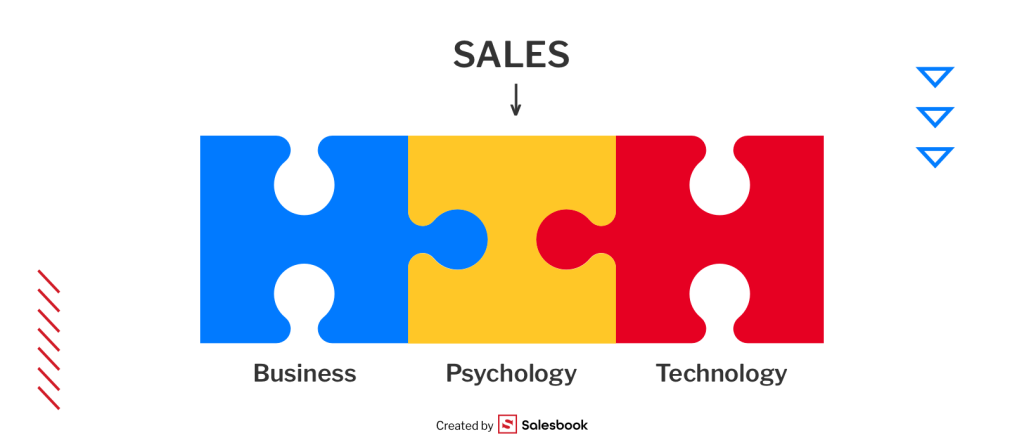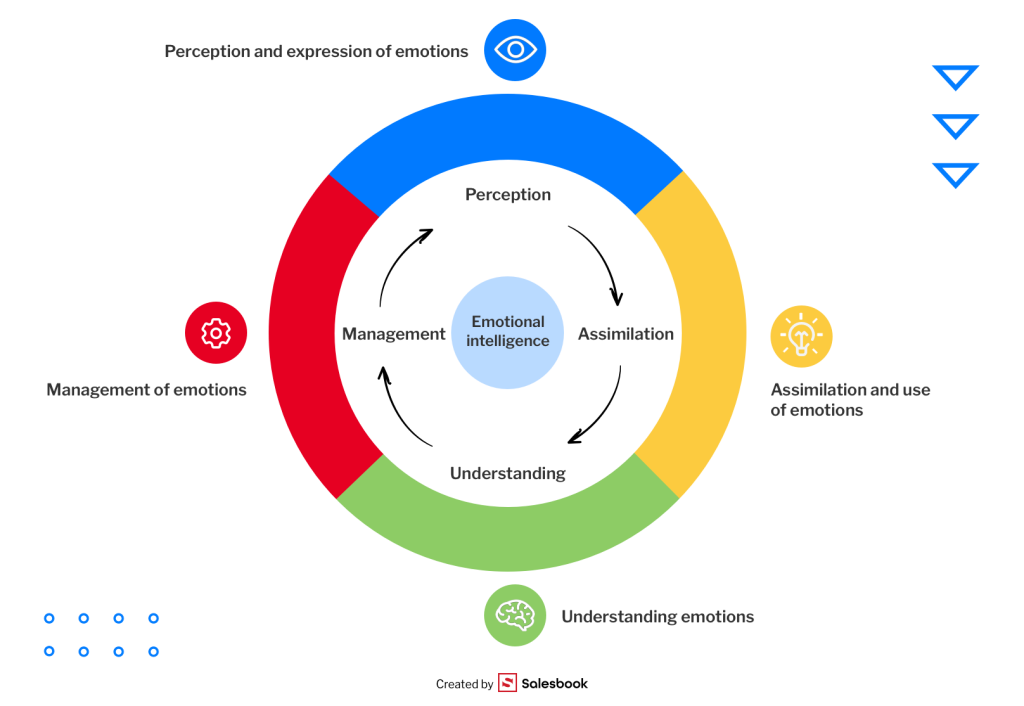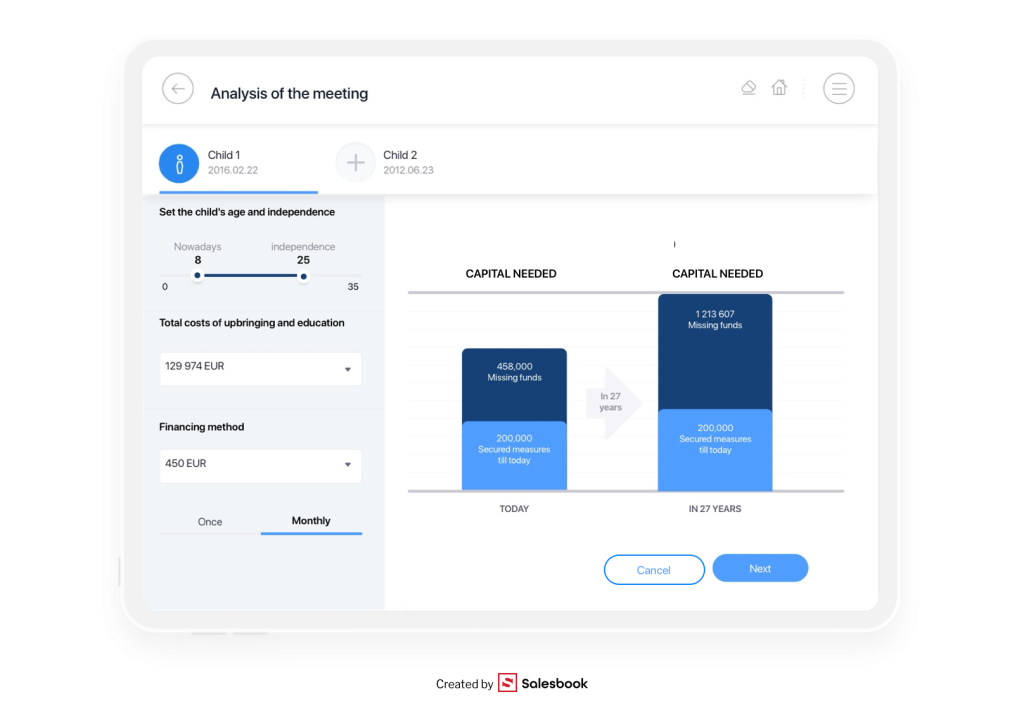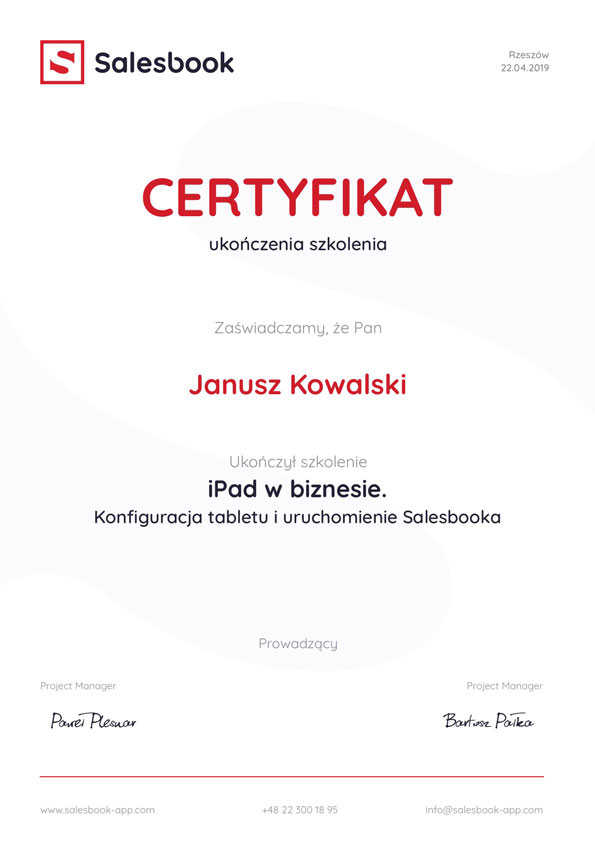

Sales

6 Feb 2024
This guide is a vital toolkit for sales professionals, merging key aspects of business strategy, psychological understanding, and sales methodologies. It’s not just about selling products or services; it’s about mastering the art of sales through a deep understanding of customer behavior and effective communication. Each principle is illustrated with real-life examples and practical advice, aimed at enhancing your sales performance and building lasting customer relationships. Dive into this comprehensive guide to refine your skills of effective salesperson and excel in the complex and rewarding world of sales.
As we embark on exploring the 10 principles of an effective salesperson, it’s essential to first lay the groundwork for what constitutes sales excellence. This section delves into the intricate relationship between business strategies, psychological insights, and advanced sales techniques, setting the stage for a deeper understanding of the transformative role of a modern salesperson.

Sales excellence is an intricate dance between proven sales techniques and the subtle art of human psychology. It’s a world where effective sales techniques are not just about closing deals but also about understanding the complex layers of human behavior. An effective salesperson is akin to a psychologist, deciphering customer messages and tailoring their approach to ensure customer satisfaction.
In this realm, loyal customers are not just won through exceptional customer care but also through understanding their needs and expectations. The sales cycle, therefore, is not a linear journey but a dynamic process, evolving with each customer interaction. A customer service representative or agent is no longer just a facilitator of transactions but plays a crucial role in customer retention and care.
The most effective sales techniques involve more than just a rehearsed sales pitch; they require personalized customer interactions. It’s about creating a mutually beneficial relationship, where the salesperson understands and anticipates the needs of existing customers, making each interaction count.

Gone are the days when a salesperson’s role was limited to pushing products. In today’s business landscape, the sales team is at the forefront of building and maintaining customer relationships. The best sales techniques now involve a blend of empathy, strategic thinking, and adaptability.
Customers expect more than just answers; they seek experiences. The salesperson of today is a customer service agent, an advisor, and a consultant, all rolled into one. They navigate customer messages, often playing the dual role of a listener and a problem-solver.
This evolution reflects a shift towards more meaningful and personalized customer interactions. The goal is not just customer acquisition but nurturing a long-lasting, loyal customer base. It’s about transforming a simple purchase into a journey of mutual growth and understanding – a hallmark of true sales excellence.

In Principle 1, we delve into the fundamental aspect of sales: understanding customer psychology. This section explores how empathy and active listening form the bedrock of effective customer relations, laying the foundation for building lasting connections and enhancing customer satisfaction.
Great customer service begins with empathy, the cornerstone of building an emotional connection with customers. It’s about seeing the world through their eyes, understanding their needs and pain points, and responding with genuine care. A customer care strategy rooted in empathy leads to higher customer satisfaction levels, as it resonates on a personal level. This approach transforms a customer care team from mere problem solvers into architects of customer loyalty. For instance, when a team member listens to customer feedback and acts on it, they’re not just resolving an issue but are actively contributing to the narrative of customer success.

Understanding customer psychology is not just about what is said, but also about what is left unsaid. The art of listening extends beyond hearing words; it involves perceiving the underlying emotions and unexpressed desires of potential customers. This skill is pivotal in crafting a positive customer experience that goes beyond the transactional level.
It’s about deciphering the silent messages conveyed through customer feedback and using this insight to enhance every interaction. A well-trained customer care team, adept in this art, can significantly elevate customer satisfaction by addressing not just the expressed needs but also anticipating the unarticulated ones.

Understanding customer psychology isn’t just about passively hearing their words; it’s an active, strategic process. Here are some specific techniques and philosophies that can elevate a salesperson’s ability to listen and identify customer needs effectively.
By incorporating these techniques and philosophies into their interactions, effective salesperson can transform standard customer service into exceptional customer care, leading to higher customer satisfaction levels and fostering stronger customer loyalty.

Trust and credibility are the bedrock of successful sales interactions. In this section, we explore how sales professionals can nurture these essential qualities. By focusing on establishing authentic connections and demonstrating consistency and reliability, effective salesperson can significantly enhance the customer experience and drive successful outcomes.
Authenticity in sales is not just a buzzword; it’s a key differentiator in a crowded market. Establishing authentic connections with prospective customers involves more than just delivering a sales pitch; it’s about engaging in meaningful sales conversations that resonate on a personal level. This starts with thorough customer research, ensuring that every interaction is informed and relevant to the customer’s journey.
Top sales techniques for building authentic connections include:

Consistency and reliability are what convert one-time buyers into long-term loyal customers. This involves not just the initial sale but the entire sales funnel, from the first interaction to post-sale customer support. Consistent selling techniques, aligned with the company culture and business goals, create a cohesive customer experience.
Incorporating these elements into your sales strategy not only enhances customer trust but also aligns closely with your business’s broader goals and values. It’s a symbiotic relationship where trust and credibility are not just beneficial for customer acquisition but are integral to achieving long-term business success.

Navigating the world of sales without effective communication skills is like trying to text with a flip phone – possible, but not exactly efficient. In this section, we’ll delve into the art of both clarity and persuasion in sales pitches, as well as the subtle yet powerful impact of non-verbal communication.
The key to a great sales pitch isn’t just what you say, but how clearly you say it. Think of it like a GPS navigation for your customer – it needs to provide clear directions to the destination (your product or service) without unnecessary detours.

Non-verbal communication, such as body language, facial expressions, and tone of voice, plays a significant role in sales. These cues can reinforce your message, build rapport, and help gauge customer reactions and feelings.
Strategies for effective non-verbal communication include:
By mastering both the spoken and unspoken elements of communication, you can turn your sales interactions from monologues into engaging dialogues, making every conversation a step towards a successful sale.

In the game of sales, strategic thinking and planning are your chess moves. This principle focuses on setting realistic sales goals and embracing long-term planning, combined with the agility to adapt to changing market dynamics. It’s about playing the long game, where understanding the buyer’s perspective and responding to their evolving needs can give you a competitive edge.
Setting realistic sales goals is akin to setting the destination in your business journey. It’s about finding the sweet spot between ambition and attainability.

Long-term planning in sales is not just about foreseeing the future; it’s about being prepared to dance to its tune. In the world of business, change is the only constant.
By balancing strategic long-term planning with the flexibility to adapt, you can create a sales strategy that not only meets the current demands of your customers but also anticipates their future needs.

At the heart of every successful sales strategy lies a keen sense of business acumen. Principle 5 dives into how understanding market trends and performing competitor analysis, coupled with aligning sales strategies with overall business objectives, can sharpen your sales process and techniques. This approach not only boosts your sales effectiveness but also ensures that your efforts contribute to the broader goals of your business.
Staying ahead in sales often means keeping a finger on the pulse of the market. Understanding evolving trends and analyzing what your competitors are doing can provide invaluable insights to refine your sales techniques.

The most effective sales strategies are those that align seamlessly with the broader objectives of your business. This alignment ensures that every step of the sales process contributes to the overall success of the company.
By leveraging business acumen in your sales approach, you create a strategy that’s not only effective in achieving sales targets but also instrumental in driving the overall success of your business.

Emotional Intelligence (EI) in sales is like having a Swiss Army knife in your toolkit – versatile and indispensable. In this principle, we explore how EI, particularly self-regulation and resilience, along with the ability to recognize and respond to emotional cues, can significantly enhance customer care and satisfaction. Mastering these aspects of EI can transform your sales technique, making you not just a salesperson but a sales whisperer.
In the rollercoaster world of sales, self-regulation and resilience are your safety harnesses. They help you maintain your cool when the going gets tough and the tough get going.

Understanding and responding to emotional cues is like being a detective in a crime drama – you need to pay careful attention to the subtleties.
When you combine EI with the best sales techniques, you create a powerful tool that not only drives sales but also builds strong, lasting relationships with customers. It’s a win-win!

Mastery of product knowledge in sales is like being a wizard at a magic show – the more tricks you have up your sleeve, the more impressive the performance. This principle revolves around the continuous learning and adaptation of product knowledge, and the art of breaking down complex information into customer-friendly bites. For sales professionals, this deep understanding is crucial in providing support that wows the customer and influences decision makers.
In the fast-paced world of most businesses, products and customer needs evolve quicker than a chameleon changes colors. Staying on top of these changes is key.

You could have the knowledge of Einstein, but if you can’t explain your product to a five-year-old, there’s room for improvement. Simplifying complex information is an art form in sales. Adn every effective salesperson knows it.
Product knowledge is more than just a sales tool; it’s the bridge that connects customer needs with solutions. By mastering this, you not only enhance customer interactions but also cement your role as a trusted advisor in the decision-making process.

Networking and relationship building are like gardening – you plant the seeds, nurture them, and watch as they blossom into fruitful relationships. This principle focuses on the art of cultivating long-term client relationships and leveraging social networks for sales success. It’s about going beyond the transactional nature of sales and fostering connections that last.
Building lasting client relationships is more than just a handshake and a smile. It’s a commitment to understanding and growing with your clients over time.

Social networks are today’s town squares, and savvy and effective salesperson know how to make the most of these bustling digital spaces for networking and sales.
In today’s connected world, networking and relationship building are not just about face-to-face interactions. Leveraging digital tools and social networks can significantly amplify your efforts in creating lasting customer relationships.

Technology and tools are not just add-ons; they are essential ingredients in the recipe for success for every effective salesperson. Principle 9 dives into how embracing digital tools and harnessing the power of data analysis can significantly enhance sales efficiency and precision. It’s about upgrading your sales toolkit to stay ahead in a digital-driven world.
Leveraging digital tools is akin to giving your sales strategy a turbo boost. These tools can streamline processes, enhance customer interactions, and provide valuable insights.

In the world of sales, data is the new gold. Effective data analysis can unlock insights into customer behavior, preferences, and trends, enabling a more targeted and successful sales approach.
Embracing technology and utilizing tools like Salesbook for data analysis not only enhances the efficiency of your sales process but also provides a deeper understanding of your market and customers, paving the way for more informed and successful sales strategies.

Standing still is akin to moving backwards. Principle 10 is all about embracing the ethos of continuous improvement and learning. It’s a journey of constant evolution, where seeking feedback for growth and embracing change and innovation are not just encouraged but essential for staying relevant and successful in the field of sales.
Feedback in sales is more than just criticism or praise; it’s a compass that guides your growth and development. It’s about turning every piece of feedback, whether from customers, colleagues, or superiors, into actionable insights.

In the realm of sales, change is the only constant. Embracing change and innovation means staying ahead of the curve, constantly updating your skills, and being open to new ideas and methodologies.
By continuously seeking feedback and embracing change, you create a dynamic and adaptable sales approach that not only meets the demands of the current market but also positions you well for future challenges and opportunities.

As we reach the conclusion of our exploration into the principles of effective salesperson, it becomes clear that integrating these principles into daily sales practices is not just a strategy, but a pathway to excellence. This final section reflects on the continuous journey of learning in sales and how the future of sales is being shaped by the integration of human skills with technological advancements, like those offered by tools such as Salesbook.
The journey of a salesperson is one of perpetual growth and adaptation. Embracing the principles we’ve discussed is akin to equipping yourself with a diverse set of tools. Each of them designed to enhance a different facet of your sales expertise. From understanding customer psychology to leveraging business acumen. The path of a sales professional is an ongoing journey of learning, refining, and evolving.

The future of sales lies in a harmonious blend of human skills and technological advancements. Tools like Salesbook are at the forefront of this evolution. By offering a platform that not only automates the more tedious aspects of the sales process but also aids in creating a more efficient and effective sales approach Salesbook reveals itself as an indispensable tool.
The integration of these 10 principles into your daily sales practices sets the foundation for a successful and fulfilling career in sales. As you continue to grow and adapt, remember that the journey is as important as the destination, and the future of sales is a thrilling blend of human touch and technological innovation.
Discover how our innovative tool can revolutionize your daily sales routine. Schedule a free demo today and see firsthand how Salesbook can streamline your sales process, enhance customer engagement, and drive better business decisions.

Any questions? Feel free to contact us.
+44 203 807 0179
Our Customer Success Team is available from Mon. to Fri. 9am - 5pm CET.
We support inquiries, processes of configuration and use of Salesbook app, as well as billing and technical issues.
